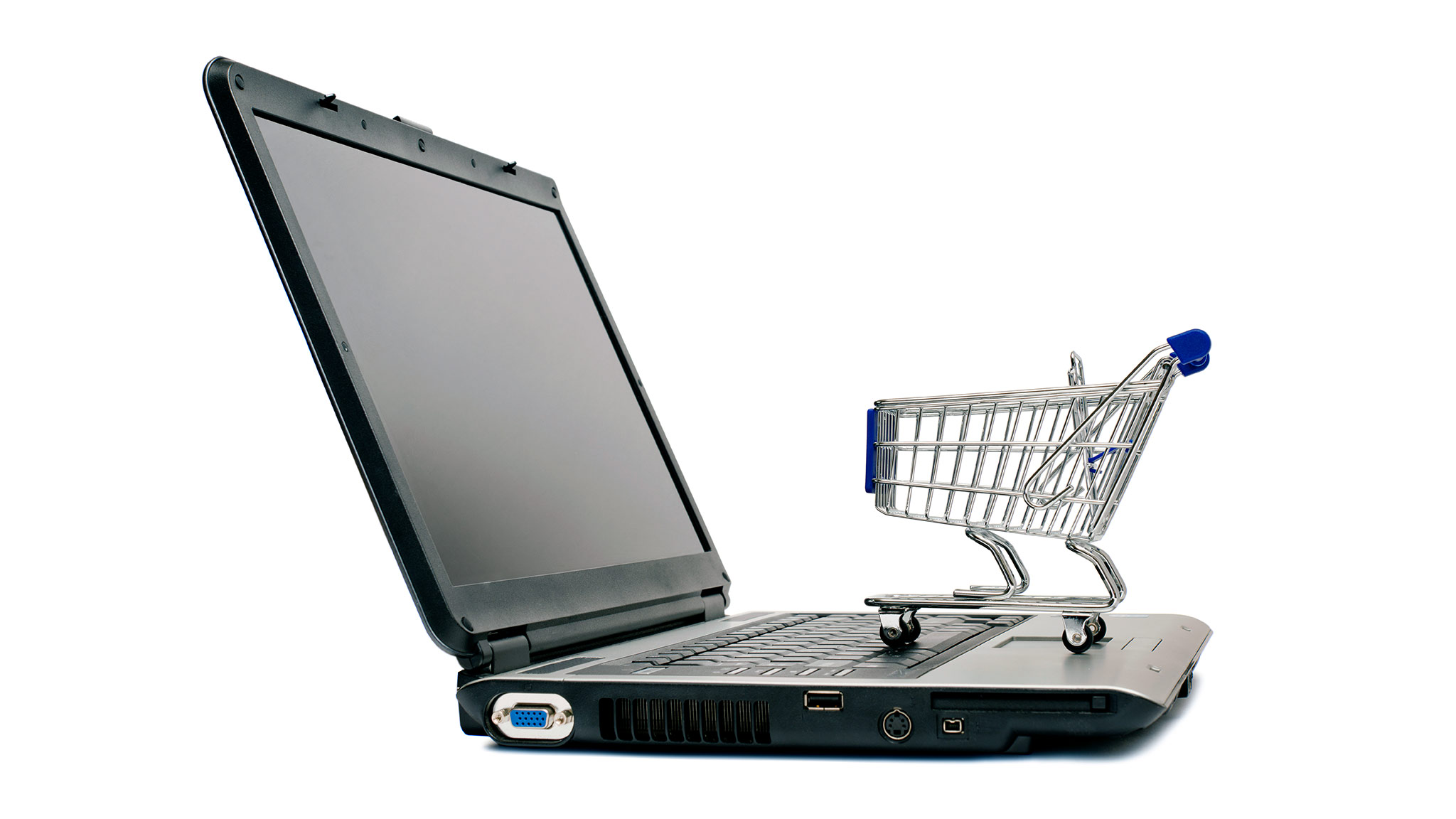E-Commerce, typically speaking, is one of the most competitive verticals in search engine marketing (SEM). We’re going to be taking a look at some advanced PPC strategies that you can implement within your E-Commerce sites and strategies.
Regardless of the industry that you’re in, be wary of the fact that fierce competitors are always going to try to level the playing field. As these retailers continue to grow, it’s up to you to devise the appropriate strategies to adapt to these kinds of situations.
Use Shopping Brand & Non-Word Keyword Segmentations
 Keyword-based text ads will give the retailers the opportunity to easily understand a consumer’s intentions and the ability to incite optimizations.
Keyword-based text ads will give the retailers the opportunity to easily understand a consumer’s intentions and the ability to incite optimizations.
With that being said, shopping ads were created from a bidding model for all kinds of products, this means that Google’s auction selects what products show up for the specific kinds of search results.
This model will remove an important aspect of optimization and bid control because retailers are not able to bid differently on a consumer throughout the journey of purchasing. While this can be sad to hear, it doesn’t need to be. There is a solution for disadvantages surrounding product bidding.
Keyword Segmentations: In the shopping setting, campaign priority, you have complete control in how much you can bid for these various queries. Which beckons the question: how do campaign priorities work?
When you have the same product in a variety of shopping campaigns, you can assess which campaign should participate in the auction for that product while using the campaign priority on a high, medium, or low output.
The highest priority campaign will always be first in the auction, regardless of how much you are able to bid.
In order to fabricate a shopping keyword segmentation structure, retailers need to start building three campaigns that are of the same products, or grouping of products, each with a unique priority setting – high, medium, and low.
The priority settings will take up the mantle of a “funnel”, monitoring the specific keywords through the negatives.
Use Search Ads As An Asse
You can use the power of dynamic search ads to your advantage to expand your keyword set at much lower costs. When creating your ecommerce campaigns, you will very often see that the best kind of keywords are also the priciest and don’t turn a massive profit.
When making your DSA campaign, here are a few things that you should be wary of:
- Pages and URLs will act as your keywords. Make sure to segment like-sections of the site into their own ad groups in order to get the most out of your copy.
- At the same time, utilize negatives! Block DSAs from coming across any irrelevant pages. It’s doubtful that there would be any sufficient queries coming from pages around careers or return policy.
- Utilize a full suite of extensions, just like you would in campaigns that target keywords. You won’t see a lot of volume because of lower ad ranks, but it’s nice to have them present
- Use audiences that are available to you. Spend most of your time optimizing toward people, and allow your engines to choose your keywords.
- Smart bidding features (target ROAS/CPA and eCPC) will help enhance the efficiency of DSA’s, but be sure to use them as often as you can.
Its become commonplace to take all of the keywords you’re going to convert from a DSA campaign and convert them into a conventional keyword-targeted campaign in order to regain your authority.
While this is an effective way to account for maximum volume, at times, CPCs spike to the point of being useless when going after every query instead of when DSAs determine how it’s going to convert.
Unless a single query is getting dominant volume or not performing as well relative to keyword targeting, experts recommend that you leave it as is.
Utilize Google Showcase Shopping Ads
In 2016, Google created a brand new ad format known as “Showcase Shopping Ads”.This solution is meant to position ecommerce, retail, and fashion advertisers in a good spotlight with their consumers.
Think of Google Showcase Shopping ads as your digital storefront. It’s the window shopping solution that your online consumers are enticed by. You’re able to put together various ecommerce, fashion, and retail products using top-tier, high-quality images.
You can complement existing products with a plethora of smaller products, or combine several products within an offer that’s “bigger” and offers discounts. Showcase ads are used to target more generic non-brand queries and they will often come up on your mobile search results.
On the SERP, the ad features a brand-specific, customized image that has a direct correlation with the search query coupled with two images that are smaller in size.
These smaller images will showcase the actual products. When the user clicks into the ad it will reveal the custom hero image, a custom description that helps to identify the brand, as well 10 products for display.
Apart from the obvious visual distinctions, Showcase Shopping ads will implement maximum CPE (cost per engagement) bidding, this means that advertisers set the highest amount that they want to pay for this kind of engagement.
Next, they are charged when someone expands the ad and spends over 10 seconds on the ad or when a user visits a link to the site before 10 seconds commences.
Back in 2018, Showcase ads continued to gain traction in mobile click share and have continued to see much momentum in 2019.
This ad format is an effective tool for branding, tailored for user engagement rather than user acquisition, and it works best as an upper funnel tactic.
Online to Offline with Local Inventory Ads
According to research from Google, about 80% of shoppers will go in-store when the retailer has an item that they desperately want. One of the most effective ways to address this expectation of immediate in-store availability is by using local inventory ads.
This ad format is an exceptional method to entice consumers to purchase products from your store, capturing their attention by highlighting products available at locations that are close to them.
Local inventory ads appear on mobile queries which include local intent (for instance, “shoes near me”) and will trigger if the user is located about 35 miles from the store. When consumers click on these advertisements, they’re automatically directed to your storefront page.


Natalie Gomes
Hey there, Natalie from Social Buzzzy , your ally in the exciting world of Instagram growth. I’ve stumbled upon something phenomenal for skyrocketing your Instagram profile and I’m thrilled to share it with you!
Social Growth Engine introduces a pioneering service that takes your Instagram engagement to new heights. It’s seamless:
– Concentrate on designing stellar content.
– Extremely cost-effective at just $36/month.
– Utterly reliable (no password needed), exceptionally effective, and tailor-made for Instagram.
I’ve experienced extraordinary results firsthand, and I’m confident you will too! Elevate your Instagram presence right now: http://get.socialbuzzzy.com/instagram_booster
Best wishes,
Natalie at Social Busy Bee
Rosita
Wow, fantastic blog structure! How long have you been blogging for?
you made blogging glance easy. The overall look of your site is fantastic,
let alone the content! You can see similar here sklep internetowy
Noella
I was able to find good advice from your content.
I saw similar here: Najlepszy sklep
Nancee
Hi, I do think this is a great blog. I stumbledupon it ;
) I am going to return once again since i have book marked it.
Money and freedom is the greatest way to change, may you be rich and continue to
help others. I saw similar here: Sklep internetowy
Maryjo
Hi there! Do you know if they make any plugins to help with SEO?
I’m trying to get my blog to rank for some targeted keywords but I’m not seeing very good gains.
If you know of any please share. Cheers! You can read similar blog here:
Sklep internetowy
Jenna
Howdy! Do you know if they make any plugins to help with Search Engine Optimization? I’m
trying to get my blog to rank for some targeted keywords but I’m not seeing very good results.
If you know of any please share. Appreciate it! You can read similar art here: Najlepszy sklep
Research Agency
It’s very interesting! If you need help, look here: ARA Agency
Analytics and social research
It’s very interesting! If you need help, look here: ARA Agency
Natalie Hancock
Hello there, I’m Natalie from Social Buzzzy , your guide in the exciting world of Instagram growth. I’ve discovered something extraordinary for skyrocketing your Instagram presence and I’m thrilled to share it with you!
Social Growth Engine brings to you a groundbreaking service that catapults your Instagram engagement to new heights. It’s effortless:
– Concentrate on producing unforgettable content.
– Extremely affordable at only $36/month.
– Completely safe (no password needed), exceptionally effective, and tailor-made for Instagram.
I’ve experienced extraordinary results firsthand, and I’m confident you will too! Boost your Instagram presence today: http://get.socialbuzzzy.com/instagram_booster
Best wishes,
Your ally Natalie